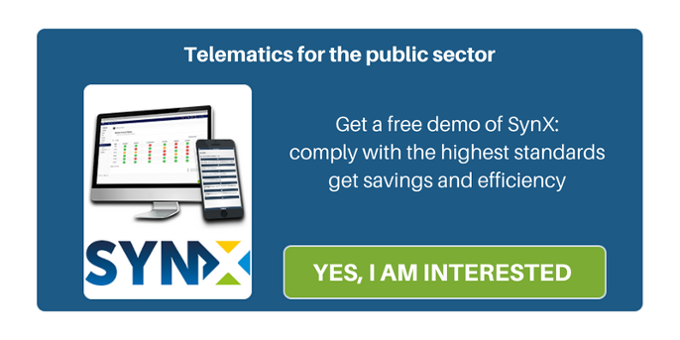
Technology is taking over in all business sectors, and the telematics of today is just another example of how technology can help deliver much greater efficiencies than even some of the most recent tech of yesterday. Right now, Fleet Management Solutions have proven to be especially helpful in a variety of industries where vehicles form the basis of the working day, and public sector organisations are no exceptions.
The study "Employee Mobility and Fleet Management Solutions in the Public Sector", a joint publication of IGov (a team of public sector experts who collate information about UK public services on behalf of both private and public sector partners) and LeasePlan UK (the world leading global fleet and mobility company), is an interesting report on the current situation in public sector fleets and what government fleets plan for the future.
Times have changed for every industry sector given the economical moment and the global crisis, and the report especially focuses on environmental considerations, procurement options and economic issues that are currently influencing the choices being made across public sector fleets. The study also explores the unique characteristics of the public sector fleet.
The introduction of telematics and fleet management solutions in the public sector is surely the best means of increasing efficiency and protecting the assets of councils or organisations that are located in different areas and deal with specific seasonal tasks such as winter maintenance. At present there is a need for fleet managers to keep up-to-date with technology, to comply with environmental regulations and also to keep a handle on finances in keeping with the government’s program of austerity.
The majority of respondents to the survey (58%) do in fact believe that government policies to reduce vehicle emissions have changed their employee mobility and vehicle fleet strategies. According to 30% of respondents, such policies might even have prevented the purchase or lease of new vehicles, and an additional 36% stated vehicle replacement cycles have been extended as a consequence of budget cuts. A further 43% of participants revealed austerity measures have had a negative impact on the size and quality of the vehicle fleet they operate. The need for systems to both economize resources and reduce emissions is very clear; what better than telematics to help public sector fleets optimize their limited resources?
According to the same study, 57% of participants in total have already introduced or plan to introduce telematics. A further 51% of participants told us they have introduced telematics to monitor vehicles and employees (lone workers). It is encouraging to see such a high take-up for telematics and it’s clear fleet managers are exploring this area more. Those not planning to do it (33%) cite either cost or lack of resources to manage incoming data as the reasons why.
If cost is not an issue (it is estimated that for every euro spent on telematics, it is possible to achieve a 3 euros cost saving) and the running costs of vehicles during their working life is managed with the aid of live, operational data, fleet managers can no longer overlook the need for companies (be they public sector or not) to work with these tools and respond to the data they offer.
You cannot simply miss the train—get in touch with us and learn how SynX can help.



